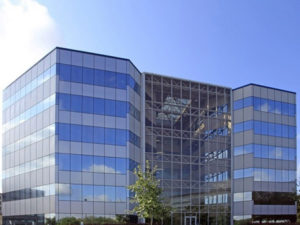He said the target is to reduce the carbon dioxide emissions and use methanol as a fuel for reaching the Bharat Stage (BS) VI specifications and methanol will give a distinct advantage.
Anisha Dutta | ETEnergyWorld | Updated: May 04, 2017, 19:20 IST
 NITI Aayog Member and former Defence, Research and Development Organisation (DRDO) chief V K Saraswat is tasked with drawing up a roadmap for India to tap the full potential of the alternate fuel. In an exclusive interview with Anisha Dutta, the Chairman of the Aayog’s Expert Committee on Methanol talks about the larger plan to structure the Methanol economy and ramp up its production and uptake. Edited excerpts..
NITI Aayog Member and former Defence, Research and Development Organisation (DRDO) chief V K Saraswat is tasked with drawing up a roadmap for India to tap the full potential of the alternate fuel. In an exclusive interview with Anisha Dutta, the Chairman of the Aayog’s Expert Committee on Methanol talks about the larger plan to structure the Methanol economy and ramp up its production and uptake. Edited excerpts..
The government had set up an expert committee on methanol last year. What have been the key developments since then?
We have to create basic awareness that methanol is the right (alternate) route as a fuel and that has been done in academic institutions, industry and even in the ministries. Methanol stores energy so you can use it as a fuel, as a chemical, as a feedstock, and also as a water cleaning agent. To that extent, we have been successful. We have created a research and development team and have managed to get industries to start working on the pilot plants. We have been able to sensitize the industry as well. We have identified where the Coal-to-Methanol technology exists. That is the route we want to take for producing methanol. We found that BHEL has the technology for converting coal to methanol. Thermax India and Coal India also have the technology. We have also identified that some good companies like L&T have also set up a large sized plant for coal to methanol production in China. This means the country has the necessary knowledge. We are now trying to draw a roadmap on Methanol production.
China has started using 15 per cent Methanol-blended petrol. What are the targets set by the Indian government?
We want to ensure methanol becomes a major fuel so that we can reduce our import bill. If we can get at least 15 per cent addition of methanol in diesel and gasoline over a period of time, it will reduce our import bill by 15 per cent. Modification kits for the gasoline engines are already developed by many countries hence our transition will be with out any technology risk. Secondly, my target is to reduce the carbon dioxide emissions and use methanol as a fuel for reaching the Bharat Stage (BS) VI specifications and methanol will give a distinct advantage. But for this, we must create methanol production capability in the country.
What are the other innovative ways being tapped for methanol production? Are we looking at gas to methanol conversion also?
There are stranded gas-fields, both on-shore and off-shore, where gas is not being produced because it is not economically viable. So, we are thinking that this stranded gas can be used to produce methanol. Coal will be mined from auctioned coal mines to set up gasification and methanol plants at the pit head. There is technology available today for setting up floating methanol plants offshore. It will take the gas from whichever sea site is nearby like the Bombay High. All you need is a floating barge on which the plant is set up. It takes the gas and convert it to methanol and transport it by ship on to the shore. It is a very simple method. If the plant is close to the coast, even a pipeline can be used for transport. We have formed a full geographical map identifying all the stranded gas fields. We are going to prepare a Detailed Project Report (DPR) for different phases of this programme. Once that is done, we are going to start looking at the investments from the industry, the government and the research institutions. We are also looking to use methanol based cooking stoves. People are burning wood for cooking in rural areas. It can be replaced by methanol-based stoves. We are trying to tie up with the industry and manufacture those cook stoves. This has already been done in Brazil and Sweden. So, we will set up a plant for methanol production which can then be supplied through the distribution agents.
Will there be an open tender for setting up plants to convert stranded gas into methanol?
We will follow the open tender process after demonstration projects are completed. After preparing the DPR, we will divide the activity into three segments including pilot plants which will be set up. Also, there are a few plants which are already producing methanol today. These are operated by three government companies — Gujarat Narmada Fertilizers, Gujarat State Fertilizers Corporation and Rashtriya Chemicals and Fertilizers Limited. Their capacity is not fully utilised but they are all working on natural gas. So, we will ask them to boost their capacity to meet the initial phase requirements Following that, we will identify private entities willing to set up plants based on coal. Before that, we will set up a coal to methanol pilot plant for demonstration. The basic tendering process will begin after that.
What are the other ways of extracting methanol being explored?
Methanol can be formed from multiple sources — coal, bio mass, municipal solid waste and stranded gas. We are trying to extract it from all the sources. We do not want to use natural gas because of its short supply but we will take stranded gas as it is available in plenty.

